What makes Lebanese food special? How did it become such a cultural phenomenon?
The Middle East has long been known for its rich culinary traditions. Lebanon is no exception. In fact, the country boasts some of the finest cuisines in the region.
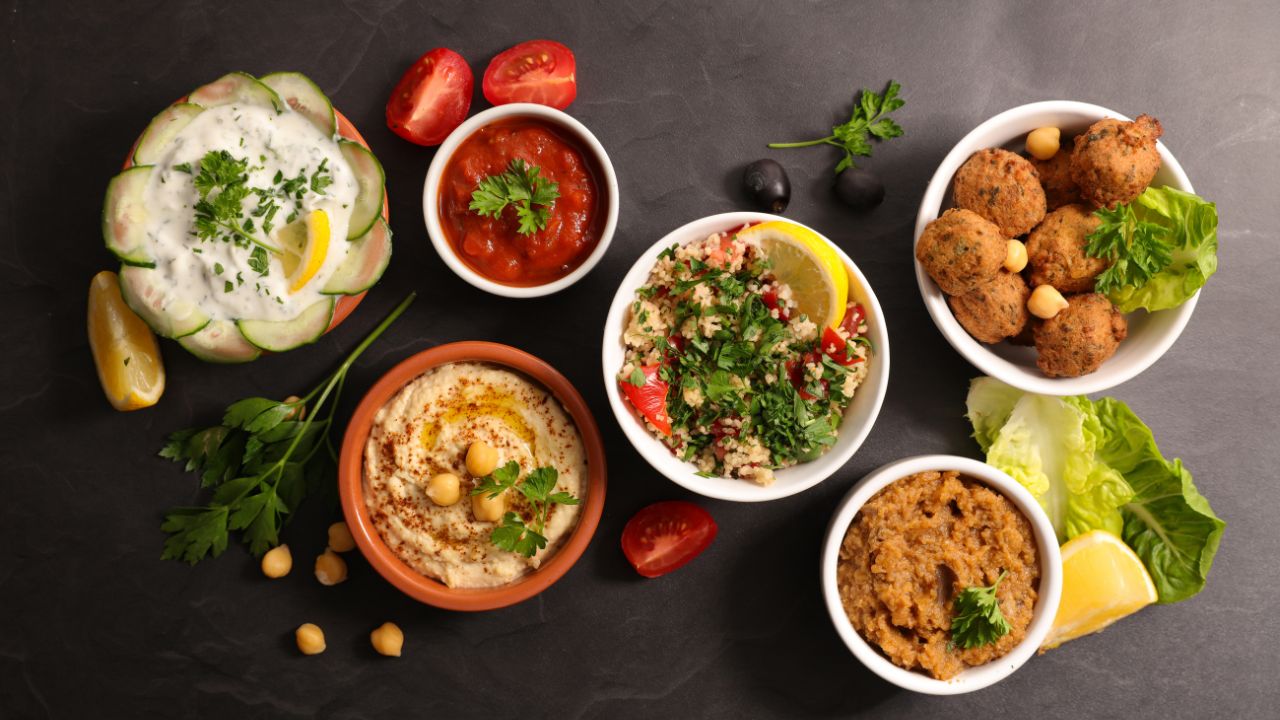
From hummus to baba ghanoush, baklava to Kibbeh Nayyeh, Lebanese cuisine offers something for everyone.
From the famous falafel to the delectable mezze platter, Lebanese food is full of flavor. And now, thanks to social media, the rest of the world knows about it too.
Here are 8 of the most popular Lebanese dishes. You won’t regret trying out any of these amazing dishes as they’re perfect for any breakfast get-together, or a breakfast for one!
Fatteh Style Hommus
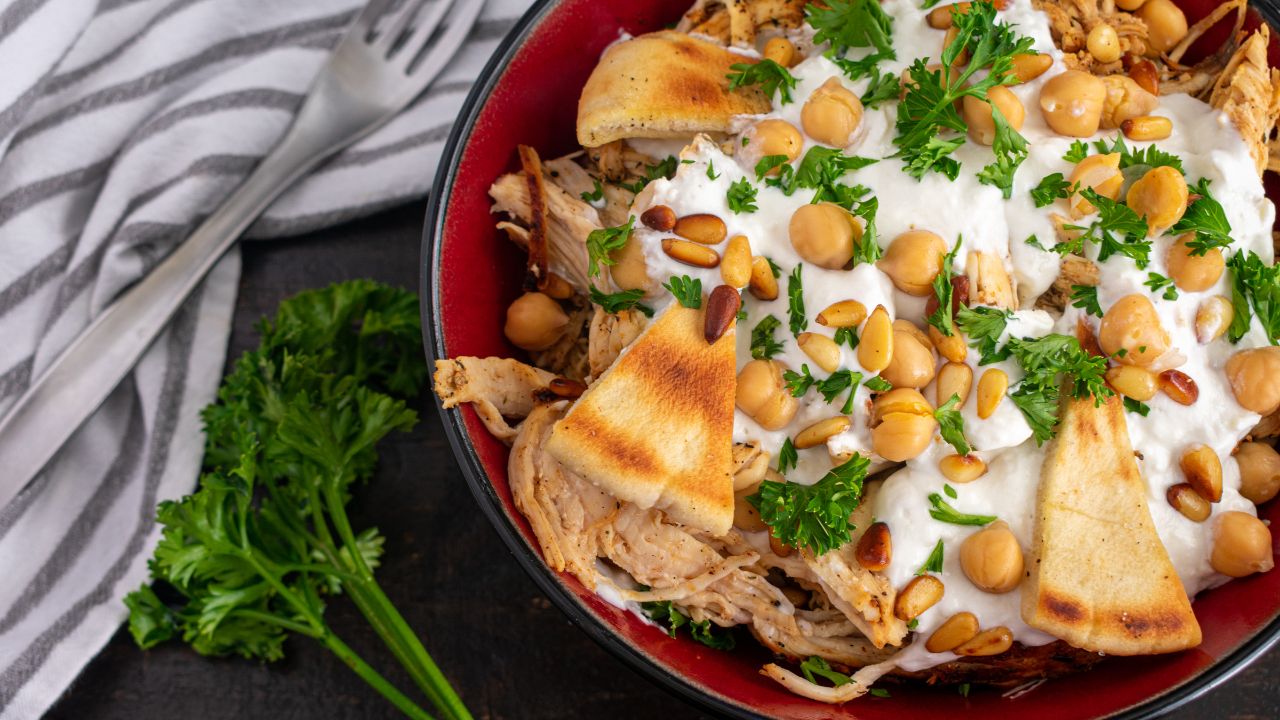
The recipe for Lebanese Fatteh Hommu, or chickpea hummus, is one of the most popular dishes in the Middle East.
This traditional appetizer consists of chickpeas blended with garlic, tahini, lemon juice, and seasonings.
In addition to being delicious and nutritious, it makes great party food because it doesn’t take much prep work.
A Lebanese classic, Fatteh Hommu is a delicious combination of chickpeas, yogurt, and crisp pita bread.
This recipe uses a traditional method of cooking chickpeas with lots of garlic, onions, and cumin.
Once you’ve got the basics down, feel free to experiment with different flavors like mint, parsley, or even chocolate chips!
Rather than dipping slices of pitta bread into the mixture, crisp pita bread is chopped into small pieces and mixed right into the chickpea mixture.
The texture is similar to croutons within a bowl of soup or a salad.
To prepare Fatteh Hommos, cook chickpeas until soft, drain off some of the liquid, combine with yogurt, salt, ground cumin, lemon juice, and other herbs and spices, mix well, and chill for several hours.
Cut the pita bread into thin triangles, brush each triangle with olive oil, sprinkle with salt, and bake in a preheated oven at 350 degrees Fahrenheit for about 5 minutes per side.
Knefe
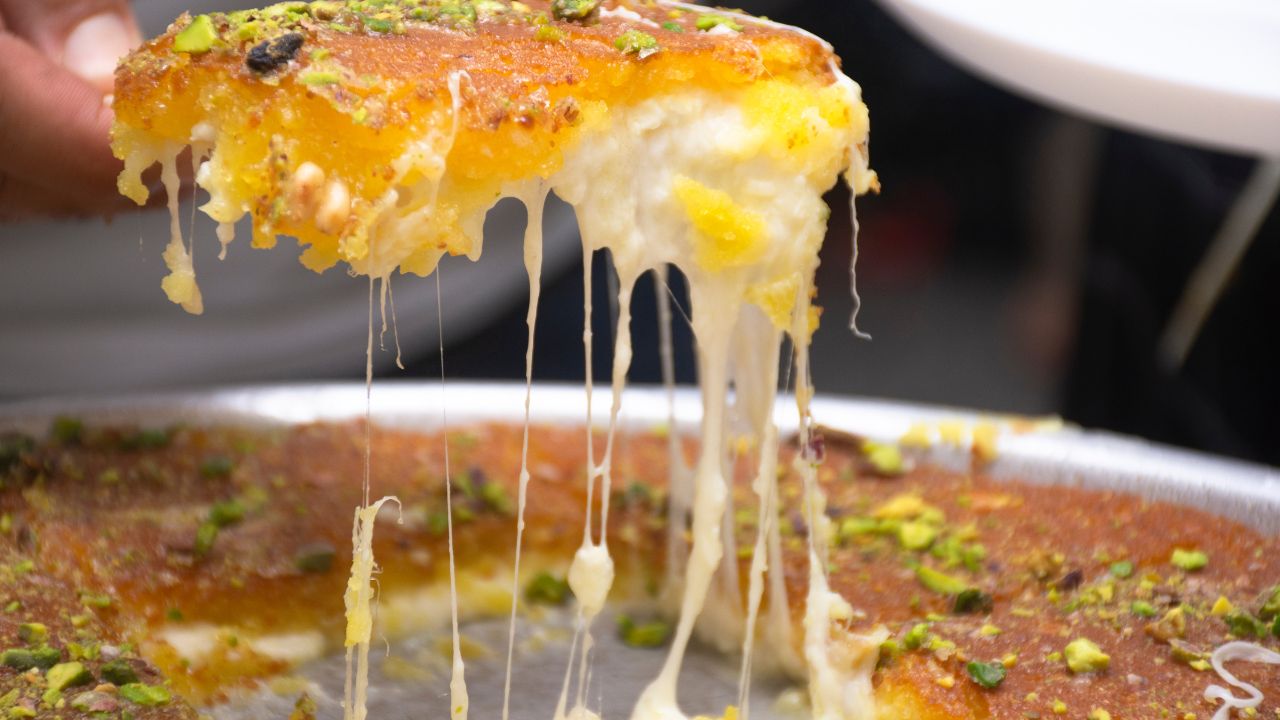
The Lebanese dessert known as knefe is a sweet, flaky pastry filled with cheese and nuts. You might think it sounds like something you’d find in Italy or Greece, but it actually originated in Lebanon.
Knefe is one of those foods that looks simple enough, but there are many different ways to make it.
Some people prefer to roll out the dough into sheets and cut them into squares; others prefer to roll the dough into circles about 3 inches in diameter and cut them into wedges.
There are even some variations where you fold the dough over itself several times.
In addition to the traditional filling of cheese and nuts, kibbeh, another Lebanese specialty, is often added to the dough.
And while we’re talking about kibbeh, I’m including a recipe here for my favorite version, because it’s really easy to make and tastes great.
Of course, you’ll want to try making your own kibbeh, too.
Manakish
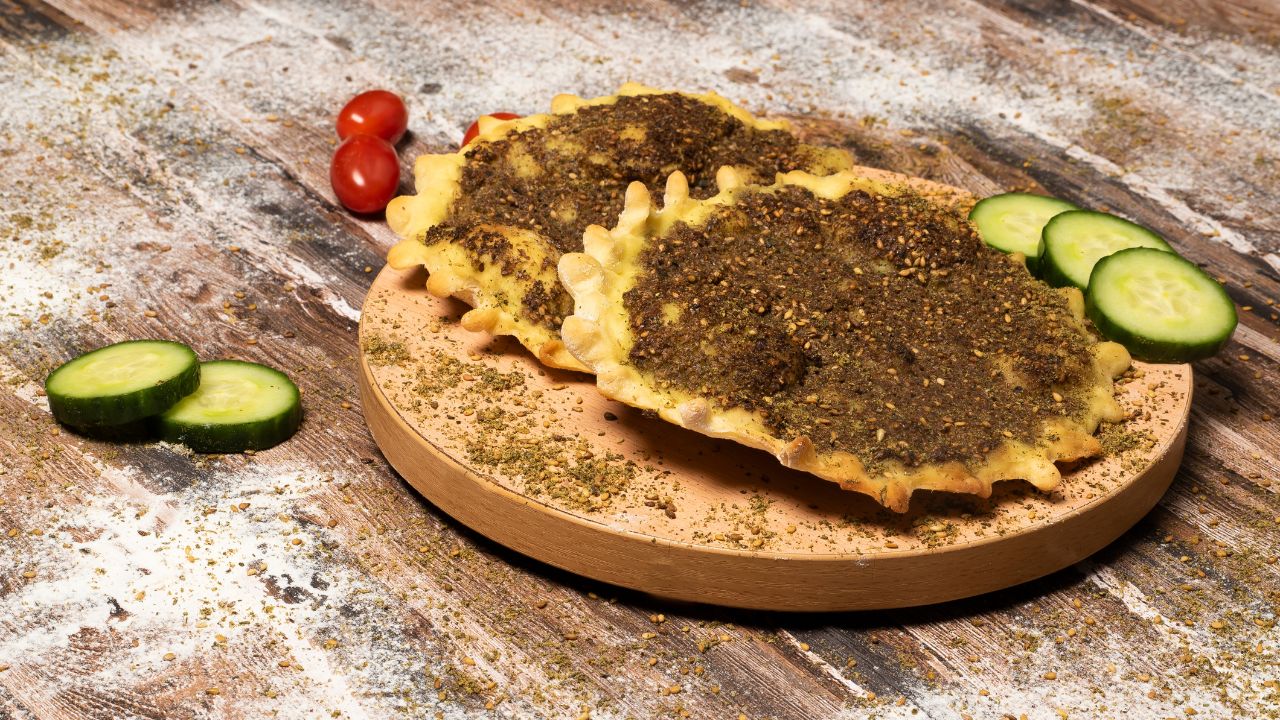
Manakish is traditional sweet bread that is eaten throughout Lebanon. It is usually baked in large loaves, cut into small pieces, and topped with za’atar, cheese, minced meat, or vegetables such as onions or spinach.
This recipe combines those flavors, along with adding some unique ingredients like sumac and walnuts.
A traditional version includes a thin bread roll called pita. The roll is rolled out into a large circle, and then it is cut into small squares.
These squares are then placed on a plate, topped with a variety of ingredients such as cheese, meat, vegetables, herbs, etc., and baked. This dish is usually eaten for breakfast.
This type of bread recipe uses a different type of bread roll, known as lavash. Lavash is a very soft, thin, chewy bread. Unlike pita, lavash does not contain pockets, so you cannot stuff it like a sandwich.
Instead, it is typically folded up and stuffed with whatever filling you prefer.
In this case, we use a dough that is similar to puff pastry, and we sprinkle it with za’atar.
We then fold the dough in half and bake it, topping it with cheese and other ingredients. Try these tips in your own version too!
Foul Bi Tahina
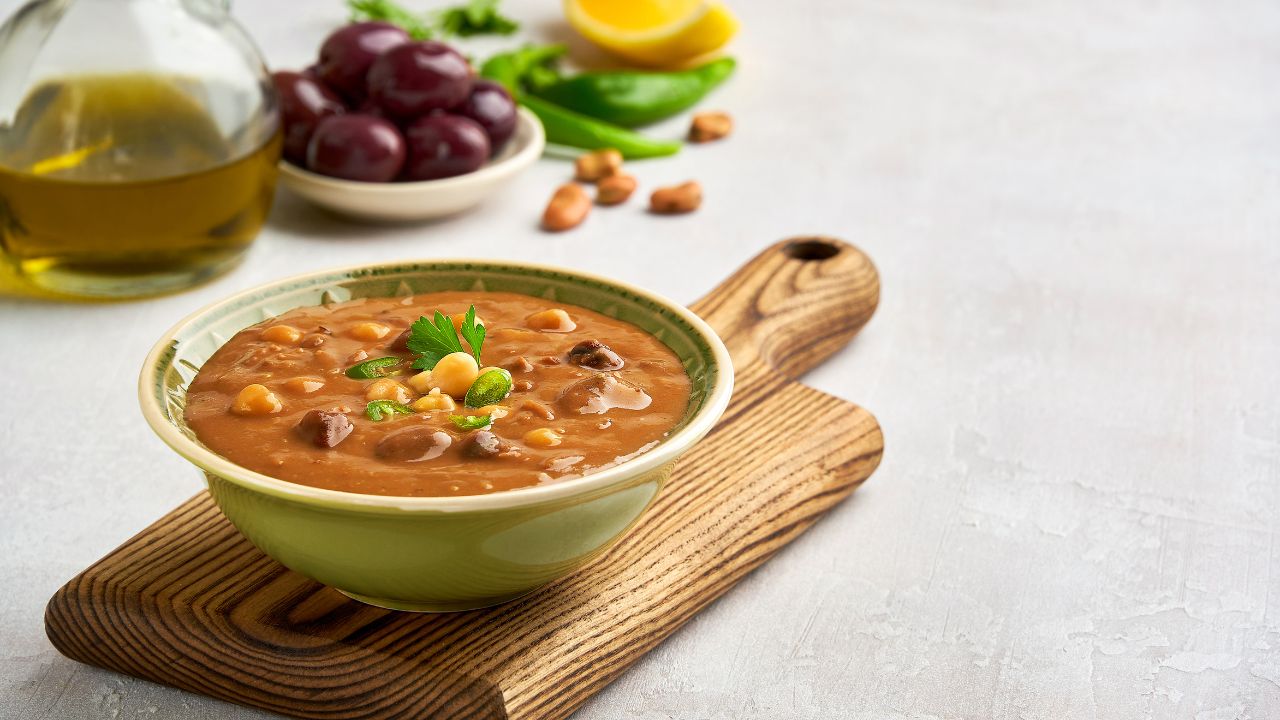
The word “foul” in Arabic translates to the bean. In Lebanon, Foul Bi Tahina, or Egyptian Foul with Tahineh, is a popular side dish. Broad beans are cooked with onion, tomato, cumin, salt, and pepper.
Some people add lemon juice and garlic to make the flavor better. This recipe makes enough for 4 servings.
The Lebanese love their food, especially those dishes that are easy to make and quick to eat.
Foul Bi Tahini is one such recipe, where there is no shortage of ingredients, but still manages to taste delicious.
This is one of our favorite recipes because it is very versatile, and we like to use whatever vegetables we find in the fridge.
You can easily substitute chickpeas for black-eyed peas, lentils, split peas, or even kidney beans. If you want to add meat, just cook up some ground beef or lamb and toss it into the mix.
So what makes Foul Bi Tahina so special? Well, aside from being easy to prepare, it is also healthy and full of protein.
And, unlike most stews, it does not require hours of simmering.
Eggs

The word “ejjeh” translates to “egg” in Arabic. This simple fact led us to wonder what sort of eggs is used in making the Lebanese version of scrambled eggs.
We found out that while most recipes call for large eggs, some use small ones.
In our research, we discovered that there are three types of eggs commonly used in Lebanese cooking: large, medium, and small.
Large eggs are typically used in baking, while medium and small eggs are used in cooking dishes like frittatas and omelets.
Large eggs contain approximately 8 grams of protein per half cup, while medium eggs contain about 7 grams of protein per half cup.
Small eggs, however, contain less protein than either large or medium eggs – about 5 grams per half-cup.
As far as the ingredients go, the main difference between the different types of eggs is their size. While large eggs tend to produce a thicker consistency, smaller eggs yield a thinner texture.
A combination of larger and smaller eggs yields a creamy consistency.
Kaak With Picon
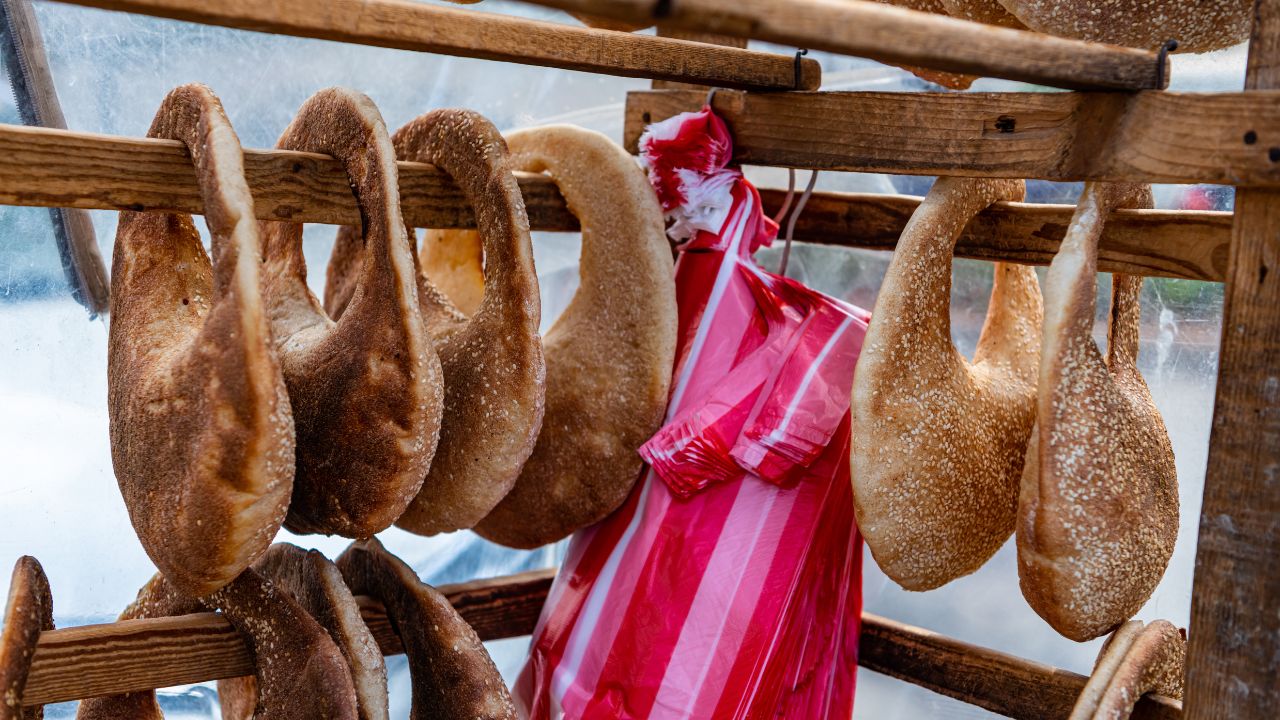
Lebanon is famous for many things, including its cuisine. One of those things is Kaak, a traditional Lebanese bread that is usually eaten for breakfast.
Kaak is typically served with za’atar, a spice mixture that includes thyme, sumac, oregano, and salt. Za’atar is often used as a condiment for hummus, falafel, and babaganoush.
But there are plenty of ways to eat it without adding za’atar.
One way is to add picon, a type of cheese that is similar to cream cheese. This combination is called Kaak with picon.
In addition to being delicious, Kaak with picon is another great way to enjoy Kaak because it adds variety to your meal.
Kaak is typically eaten for breakfast in Lebanon. It is a type of seasoned loaf bread that is soft with a crunchy crust.
Kaak is usually served with Za’atar, a spice blend of thyme, oregano, marjoram, sumac, salt, black pepper, and sometimes cumin.
In addition to being used as a table bread, Kaak is often stuffed with vegetables like eggplant, bell peppers, onions, tomatoes, spinach, or mushrooms.
In some cases, the stuffing is topped off with feta cheese, hummus, olives, pickles, and even meat such as chicken or beef (see also ‘What Does Cow Tongue Taste Like?‘).
The Lebanese version of Kaak is called kibbeh, which is a type of ground meat dish. Kibbeh is often filled with minced lamb, chicken, or beef mixed with bulgur wheat and spices.
Other versions include potato, chickpeas, lentils, or fava beans.
Balila
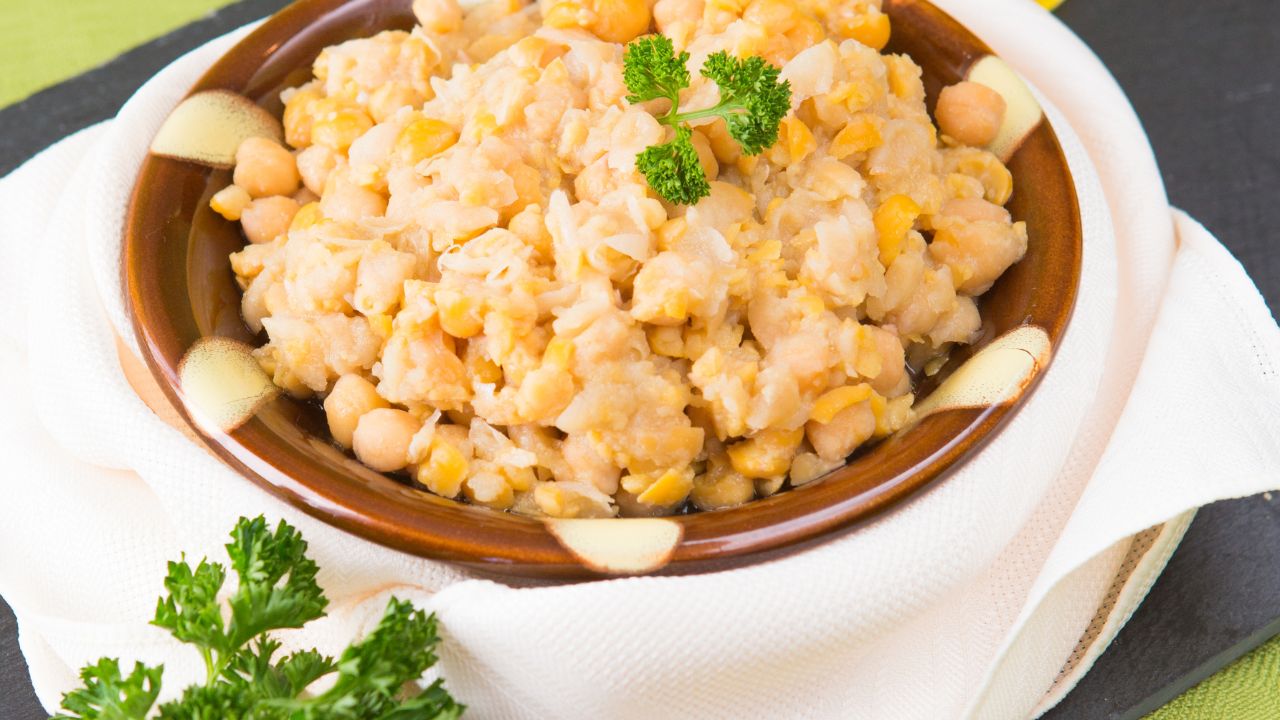
The word “balila” means “to eat” in Arabic. This is what we call our favorite breakfast. It’s fast, easy, and delicious. You’ll love it, too.
Balila is a simple but delicious dish that originated in Lebanon.
Made with chickpeas, it’s served warm with tahini sauce, topped with za’atar, and drizzled with olive oil. We love it because it’s easy to make, inexpensive, and quick.
It actually refers to a traditional Lebanese breakfast dish that consists of cooked chickpeas mixed with olive oil, garlic, and spices.
This delicious meal is usually served with a side of pickled vegetables.
Sfiha
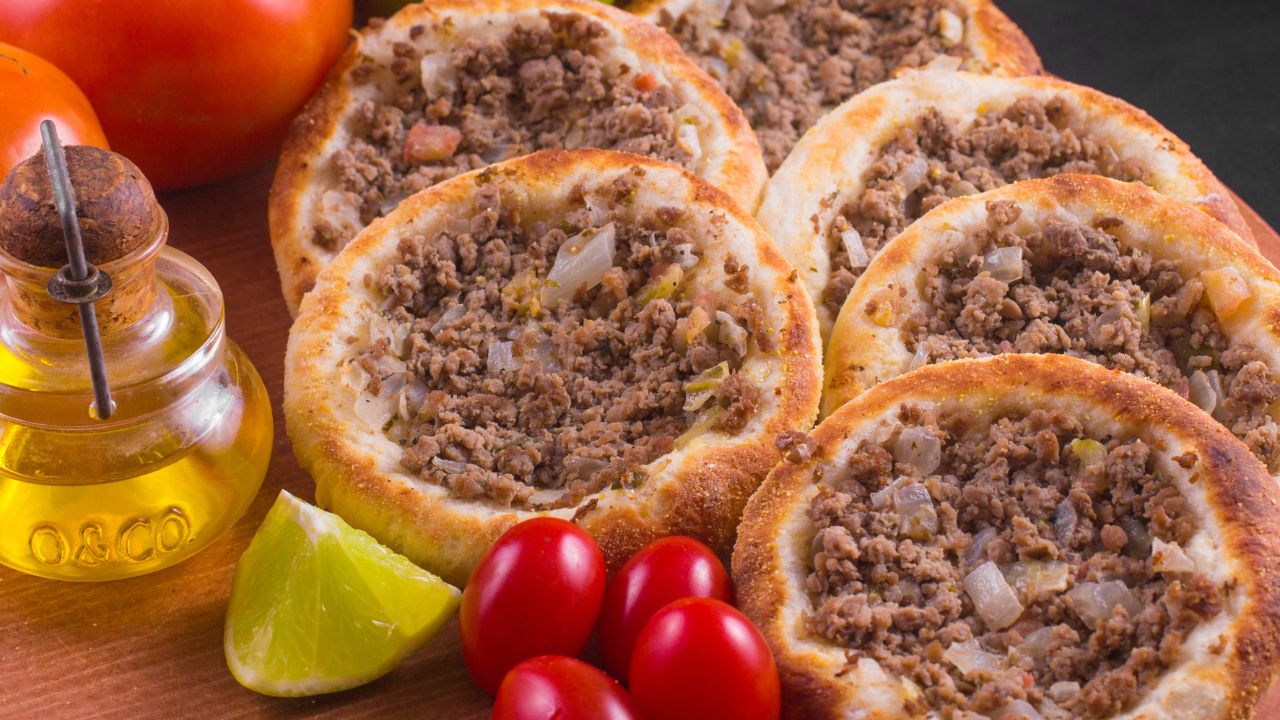
Sfiha also spelled “sfeeha,” is a flatbread dish very similar to manakish, although there are some variations among regions. The dough of sfiya is mixed with spices such as cumin or allspice.
Many add yogurt to the mixture to give it a tangy, slightly sweet flavor.
Sfiya is topped with minced meat such as lamb, and other flavorings such as pine nuts, onion, tomato, and spices or herbs including allspice, parsley, red pepper flakes, and nutmeg.
Some people add pomegranate juice into the dough to make it sweeter.
The word sfiha originated in Syria, where it is known as kibbeh bil Laham. In Lebanon, the term refers to both a type of bread and a type of pie. In Egypt, it is called shawer el tabbouleh.
Frequently Asked Questions
How Exactly Do You Make Shakshuka?
Shakshuka is one of those dishes that everyone loves.
Shakshuka, like many dishes, is simple enough to do yourself. But it’s also one of those recipes that take some finesse to master.
If you’ve never cooked anything outside scrambled eggs or omelets, adding layers of ingredients to a hot skillet might seem intimidating.
However, once you know what goes inside, making shakshuka is actually pretty straightforward. Here are the steps to follow.
What Is Lebanese Style Cuisine?
Lebanese cuisine refers to all the great culinary traditions of Lebanon, where food is both central to daily life and deeply rooted in history.
This is a land of mountains, valleys, seas, deserts, and cities—and it’s been settled since prehistoric times.
The people of Lebanon speak Arabic and Aramaic, and although there are some differences in dialect across the country, most foods reflect the influence of neighboring countries such as Syria, Palestine, Jordan, Iraq, Iran, Turkey, and Egypt.
Though Lebanese cuisine does include plenty of meat (usually chicken and lamb), many dishes are also vegetarian, due to the country’s love of whole grains, beans, lentils, nuts, seeds, and fresh vegetables.
Meals tend to revolve around the concept of mezzes, a dining style that serves up an entire meal in a set of small plates.
These dishes often incorporate seasonal ingredients, and cooking methods vary depending on the region.
For example, the coastal areas use olive oil and lemon juice, while the mountain regions favor herbs and spices.
The term “cuisine” itself stems from the French word “cuisinier,” meaning “cook.”
But unlike Western cuisines, where ingredients tend to be imported, much of what we eat in Lebanon is homegrown.
And because of the country’s location — sandwiched between Syria and Israel, smack dab in the middle of the Middle East — it’s been influenced by both cultures.
Final Thoughts
There are so many delicious ways to start your day, but I’m sure you’re wondering what makes some breakfasts better than others. After all, everyone loves a good, hearty meal.
So, take a look at some of our favorite Lebanese foods, and we’ve given a few tips above on making your next meal even tastier.
Most of the recipes here use a combination of ingredients, including eggs, cheese, meat, vegetables, herbs, and spices.
These are all staples in the cuisine of Lebanon, and you’ll find that each dish contains one or more of these elements.
Whether you choose to go with something simple like egg salad or something more complex like stuffed grape leaves, you’ll always end up with a tasty treat.
We hope you enjoyed this article on the top 8 most popular breakfast foods in Lebanon.
- 15 Traditional Greek Breads - July 31, 2023
- 30 Delicious And Gluten-Free Cookie Recipes - July 29, 2023
- 30 Of The Best European Desserts - July 29, 2023
